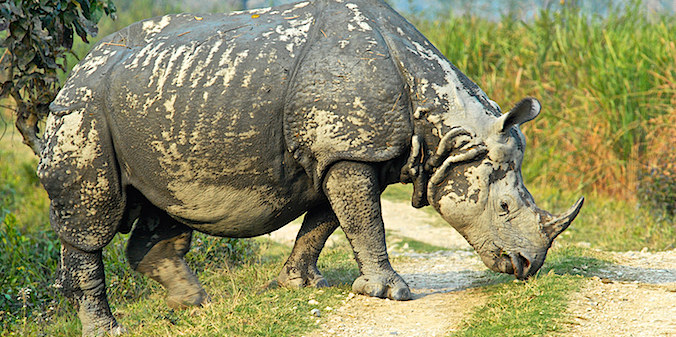ASSAM, MEGHALAYA and NAGALAND
Tour - 16 days
ASSAM, MEGHALAYA and NAGALAND
Tour - 16 days
About Assam, Meghalaya & Nagaland
Assam is the only state in north-east India that is almost entirely low-lying. It consists largely of the flood plains of the Brahmaputra, one of the largest untamed rivers in the world. The climate is fantastic for rice cultivation, all kinds of tropical crops, bamboo cultivation and fish farming.
Assam is relatively densely populated. The legal part of the population consists of at least 35 million people on an area of 78,000 square kilometers (similar to Czechia, a bit smaller than Austria), the illegal part at least 5 million.
Read more…Read lessThe name Assam comes from the same origin as Siam, which means Thailand. The larger part of the population finds its roots far to the east, from where their ancestors, the Ahums, entered the area in the 13th century. For more than 600 years, the Ahums upheld a kingdom in Assam. Especially in the last two centuries, the Assamese culture, language and genetics have changed due to frequent immigration from India, Nepal and later Bangladesh.
Before the Ahums settled in the Brahmaputra Plain, other peoples already lived here. The most important of these are the Bodos, who now live mainly in the north and northwest of Assam (population about 1.5 million).
Nagaland is wedged between Assam in the west and Myanmar (Burma) in the east. It is about half as large as the Netherlands and, with around 2 million inhabitants, relatively thinly populated. Nagaland is quite mountainous, the highest mountain reaching 3840m (Mt. Saramati). But most of the state is between 500 and 2000m, and thus endowed with a climate in which virtually anything will grow. The main crops are rice (especially mountain rice), corn, millet, pulses, tobacco, oilseeds such as mustard, sugarcane, potato, and bamboo.
A significant part of the Nagas still live of shifting cultivation. This is a form of agriculture wherein every so many years a new piece of forest is burnt down, then tilled for some time till the soil is exhausted, and left for another piece of land. The government is trying to discourage this highly unsustainable form of farming, and encourage alternatives, such as orange and pineapple cultivation.
Read more…Read lessThe people of Nagaland belong to the Burmese-Tibetan ‘race,’ probably originating from Tibet, perhaps with influx from Southeast Asia. They are believed to have settled around the year 1000 in present day Nagaland. Although he Nagas never had their own state, they were considered a culturally and geographically distinct entity by neighbouring countries.
One of the causes of this lack of statehood was the habit of the Naga tribes to continuously wage wars between them. In addition, the Nagas had the curious habit of head hunting. The heads and scalps were cherished as trophies and can still be seen in the villages. Contact with Christianity has eventually made them abandon the practice, but not before the early fifties. Today the war dances of the Nagas, performed at festivals, are a major draw for tourists.
There are 18 different tribes, each with its own distinct customs, dialect and clothing. But the Nagas are united in their cultural traditions and customs, religion – today, almost all Nagas are Christians – and the use of Nagamese – a lingua franca that is a mix of Naga and Assamese.
Manipur lies south and east of Nagaland and borders Myanmar (Burma). The state is also mountainous and thinly populated. The economy is mainly agricultural, largely self-sufficient (little or no export) and also relies on hydroelectric power generation. The inhabitants belong to different groups, such as the Meitei, the Kuki, Naga, and Pangal. All these peoples speak a Sino-Tibetan language. Although Manipur has been at the crossroads between South Asia (India) and Southeast Asia for at least 2500 years, today, it is the least visited state of India (by tourists).
Read more…Read lessIn sharp contrast to Nagaland, Manipur was already a political entity about 2000 years ago. Before joining India in 1949, it was an independent, so-called princely state. The main ethnic group in Manipur are the Meitei (53% of the population). These are predominantly Hindu, and their language Meeteilon (Manipuri) is also the official language of the state. Within India, the state of Manipur is known for its good polo players and polo horses, but also for its traditional dances. These are considered to be part of the official classical dances of India.
Region
Assam, Meghalaya & Nagaland (India)
Best Time
Feb-April &
Nov-Dec
No. Of Days
16 days
Trip Character
Jeep tour with walks
Sleeping Altitude
65 - 1620 m
Price
INR XXX/ $ XXX
ABOUT THIS TOUR
On this tour, we take you to India’s easternmost parts, making a round trip through the upper reaches of the Brahmaputra. Starting off at Guwahati, the capital of Assam, we travel upstream along the majestic Brahmaputra to Kaziranga National Park, home to the largest population of Indian rhinos, as well as elephants, tigers and much more. Then we cross the Brahmaputra to Majuli Island, where we walk and bicycle through traditional villages of the Mishmi tribe and witness a unique esoteric dance performed by a community of Vaishnavite (Hindu) monks. Further east still, we reach Dibrugarh, where we stay two days at a very atmospheric nineteenth century bungalow amidst tea plantations.
Then we enter the far-eastern states of Nagaland and Manipur. Both are due outside the tourist circuits, Manipur is even India’s least visited state. That’s not because there is nothing to see. The mountains are lush green, thanks to an abundance of rain, and harbor some very fine subtropical forests and supreme mountain vistas.
If your travel dates are right (roughly between mid-November and mid-December) you can visit one or two of the most colorful and well-organized festivals of the Northeast: the well-known Hornbill Festival in Kohima (Nagaland) and the much less know Sangai Festival in Imphal (Manipur). The latter is named after a rare species of marsh-dwelling deer found only in Manipur.
YOUR custom-made TRIP
The tour described here, as well as the other ones on our website, are mainly meant as suggestions. We would be happy to offer you a travel proposal that fully meets your personal demands and expectations. That means that you choose where you want to go, what level of accommodation and type of transport you want and what activities you prefer.
Please let yourself be inspired by this and other trips on our website and then drop us a line (or call us) to explain your travel wishes. We will be happy to help you put together the perfect trip. You can reach us over e-mail, Messenger, Whatsapp or mobile phone.
EXTENSIONS & VARIATIONS
Apart from the tour as described here, you could consider the following add-ons and changes:
- There are other cultural festivals Assam, Nagaland and Meghalaya that take place during the autumn and winter months. Among the best known are the Hornbill Festival in Kohima (Nagaland, December 1 -10) and the Sangay Festival in in Imphal (Manipur, November 21-30). If your travel dates are close to these dates we can work out an itinerary in which you’ll be able to attend one or both of these festivals.
- If you’re wild about wildlife one or several extra days at Kaziranga are recommended. There is a lot to see in the six different ranges, and the longer you stay, the better your chances of seeing some of the more elusive species.
- The roads to Mon and Longwa are generally quite bad, and the drive is long. To make the time investment and ‘suffering’ more worthwhile, it makes sense to stay longer in this area. Staying two nights (one full day) extra at Longwa is highly recommended.
ITINERARY
-
Day 1: Delhi / Kolkata ✈︎ Guwahati & car to Shillong
At Guwahati airport you’ll be greeted by our staff. Leaving the Assamese plains, you follow hilly roads to Shillong, the capital of the state of Meghalaya, which means “the abode of the clouds.” Located at an 1500m, Shillong once was the summer capital of British India, and the colonial ambience is still there. Altitude 80 → 1500m. -
Day 2: In Shillong
Today you can visit Shillong's sights, such as Shillong Peak (good views), the Elephanta falls, idyllic Ward's Lake, and 19th century Mary’s cathedral. Altitude 1500m. -
Day 3: Shillong - Cherrapunjee (4 h)
Traveling south, you'll reach Cherrapunjee, locally known as Sohra, a tiny village which long held the record of receiving the highest rainfall on earth. And you'll take a walk in the well-conserved 'sacred' forest of Mawphlang. Altitude 1500 → 1400. -
Day 4: In Cherrapunjee
Today you'll explore the beautiful forested ravines of Cherrapunjee and discover the unique phenomena of its fairy-tale natural root bridges. Altitude 1400m. -
Day 5: Cherrapunje - Dawki - Mawlynnong (4 -5 h)
Moving closer to Bangladesh, you'll visit the spectacular Seven Sisters Falls, the Mawsami limestone caves, and a magnificent view point of Bangladesh. After visiting Dawki, on the Indo-Bangladesh border you'll check in to a homestay in India's 'cleanest village' Mawlynnong. Altitude 1400 → 25 → 475m. -
Day 6: Mawlynnong - Guwahati (6-7 h)
After visiting another, particularly beautiful living root bridge, we drive to Guwahati, the capital of Assam. Here, the large, 15th century Kamakhya Temple as well a little Shiva temple on a tiny island in the Brahmaputra can be visited. Altitude 475 → 75m. -
Day 7: Guwahati - Dimapur – Kohima (5 h train, 2 h drive)
We rise early and board the 06:30 train to Dimapur in the state of Nagaland, ftomwhere we drive up to Kohima, Nagaland’s capital. After lunch we visit the Second World War memorial and the very interesting ethnic local market. Altitude 75 → 1550m. -
Day 8: Kohima – Tuophema (2 h)
We drive to Touphema and check into a village guesthouse built in the Angami Naga style. If you have chosen your dates right, today is the first day of the Sekrenyi festival of the Angami Nagas. There will be games and a traditional dance. Altitude 1550 → 1520m. -
Day 9: In Tuophema
Today again we’ll attend the festival and visit the small but interesting museum. Altitude 1520m. -
Day 10: Tuophema - Khonoma (2.5 h)
We drive back to Kohima on and on to the small town of Khonoma, 20 km from Kohima. This village was never subjugated by anyone, not even by the British. We’ll walk through a nearby bird sanctuary. Altitude 1520 → 1620m. -
Day 11: Khonoma - Jorhat (5 h)
We drive down to the plains and continue north to Jorhat. Here we check in to an atmospheric tea chang bungalow on a tea estate.
After a lovely cup of tea in the garden, we explore its origins in a nearby tea garden. Altitude 1620 → 85m. -
Day 12: Jorhat - Gibbon Sanctuary - Majuli Island (3 h; 1.5 h ferry)
Early morning we visit Gibbon Sanctuary, about 45 min drive from Jorhat. On a walk in the park with a ranger we hope to spot the rare and endemic Hoolock Gibbons (an ape species) as well as some spectacular birds and maybe wild elephants.
Then we drive to the shore of the Brahmaputra and sail for 1.5 hours to Majuli Island, one of the largest inhabited river islands in the world. Look out for rare Ganges dolphins! Altitude 65 → 65m. -
Day 13: On Majuli Island
Majuli is a paradise for water birds, but it is best known for its Satras. These are kibbutz-like monasteries where Hindu monks who belong to Vaishnavism live. We will witness monks performing dances, which have acquired UNESCO World Heritage status. You can also go on a very enjoyable bicycle trip, riding over small dikes and passing through many small Mishing villages. -
Day 14: Majuli - Kaziranga N.P. (97 km/ 3h)
In the morning we cross the Brahmaputra again and then drive to Kaziranga N.P., where we check into a comfortable lodge with lush gardens. In the afternoon we do our first open-jeep safari. Kaziranga is the best place to view the Indian Big Five: Indian rhino, tiger, leopard, buffalo and elephant. It is and a World Heritage Site for nature. Altitude 95m. -
Day 15: In Kaziranga N.P.
Again you’ll do two jeep rides, each in different parts of the park. The park has seven different ranges, each with its own landscape and different chances of seeing particular species. Altitude 95m. -
Day 16: Kaziranga N.P. - Jorhat & flight Jorhat ✈︎ Delhi/ Kolkata
After breakfast you will be taken to Jorhat Airport for your flight back to Delhi or Kolkata. It depends on your international connection whether you may want an overnight stay here, which we can arrange.
HIGHLIGHTS OF THIS TOUR
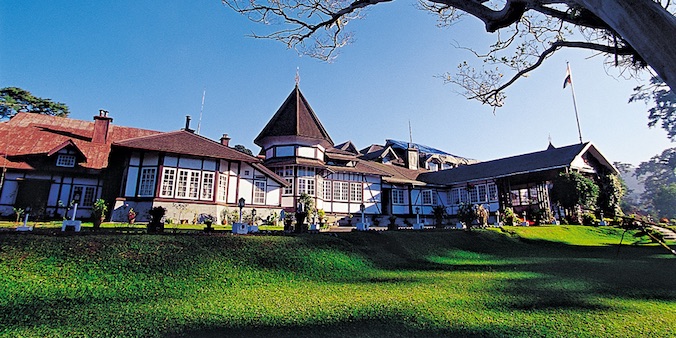
shillong
Cherrapunjee
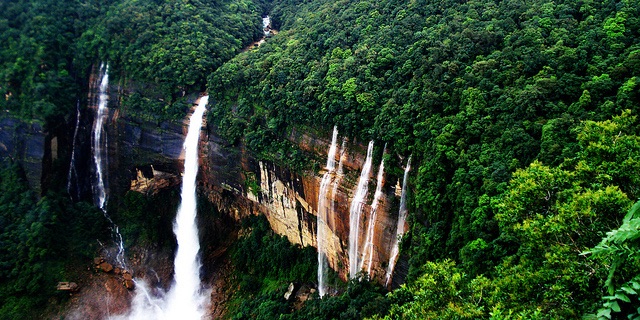
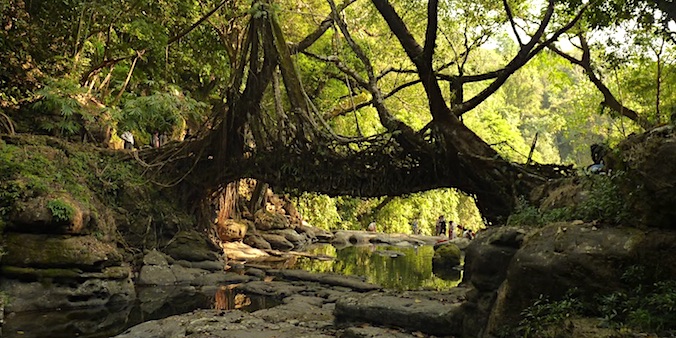
LIVING BRIDGES OF MEGHALAYA
Mawlynnong & Dawki
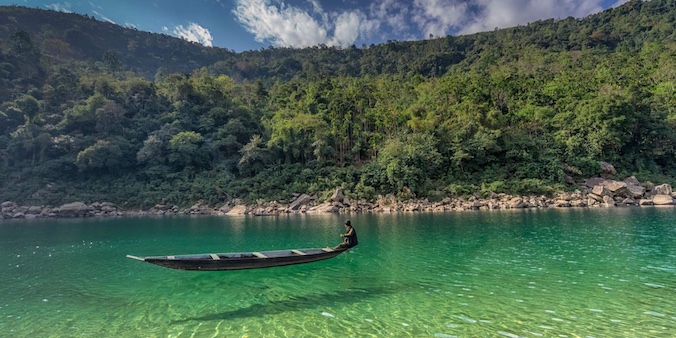
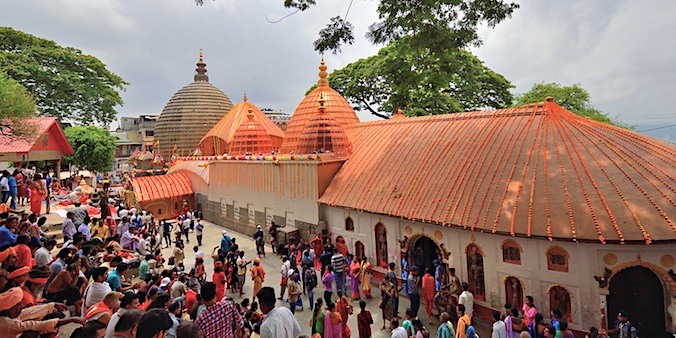
Guwahati
The Naga Culture
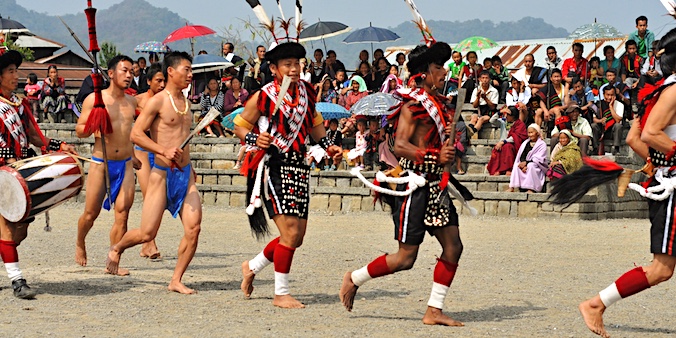
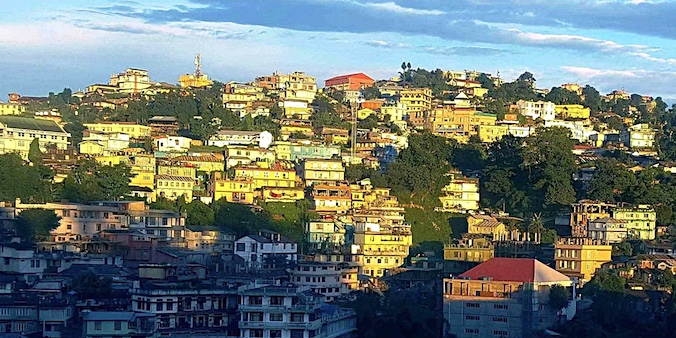
Kohima
Sekrenyi Festival
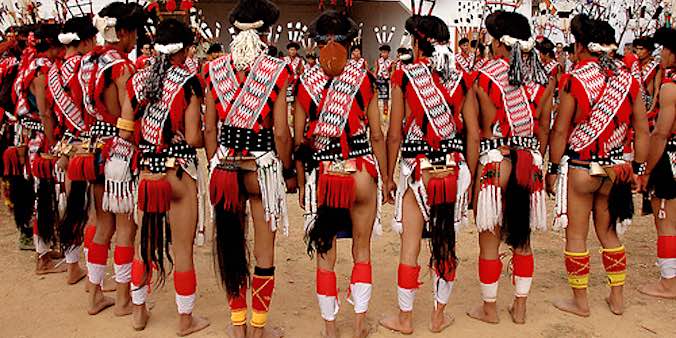
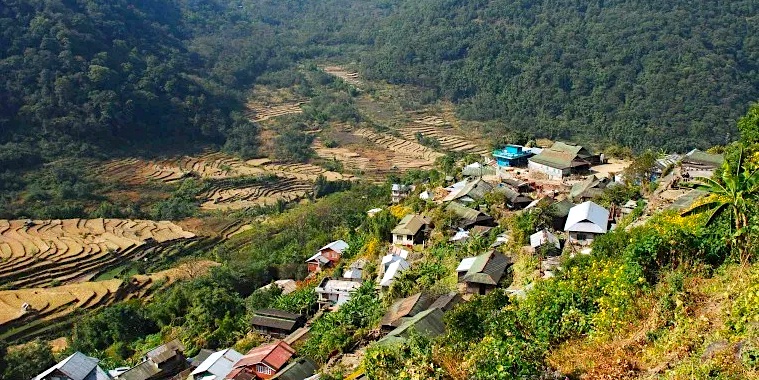
Khonoma
The Mithun
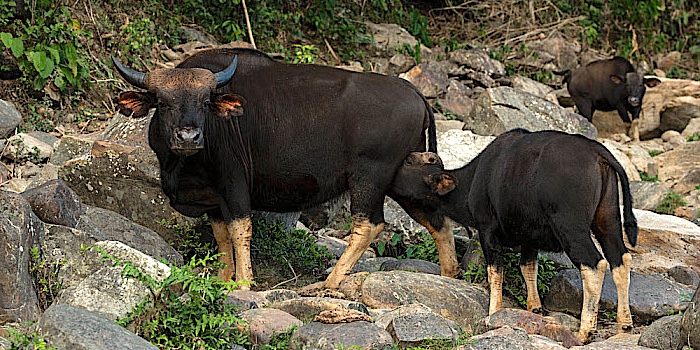
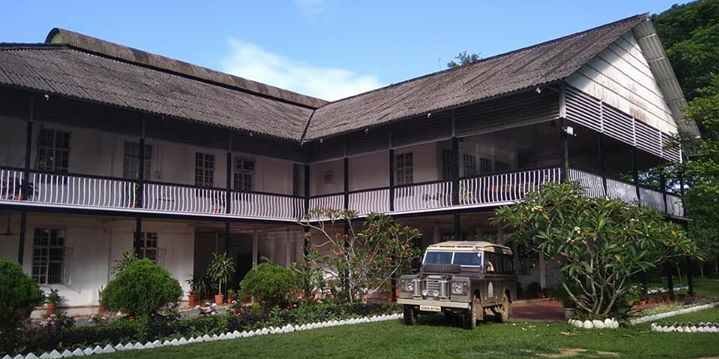
Chameli Memsaab BUNGALOW
Tea Gardens of Assam
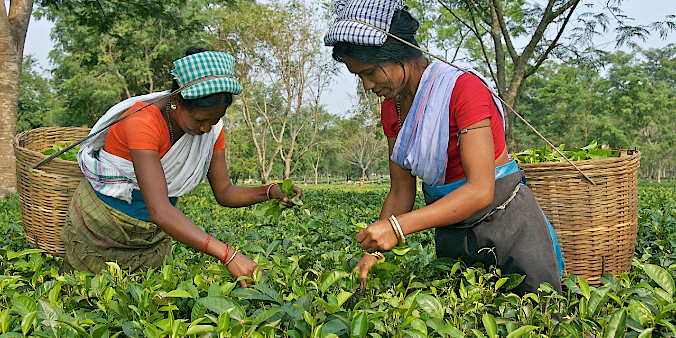
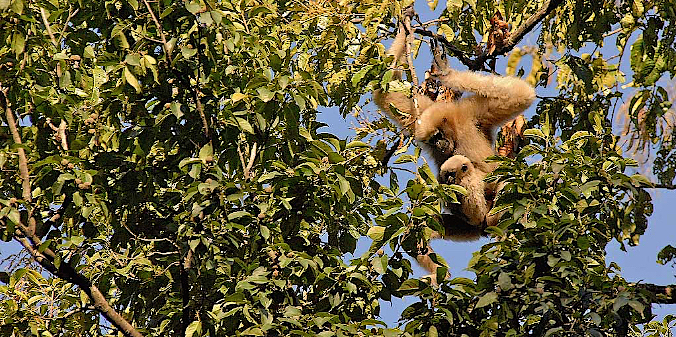
Gibbon Sanctuary
Brahmaputra CROSSING
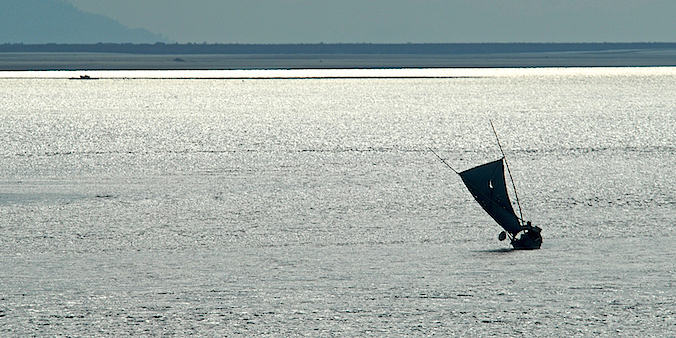
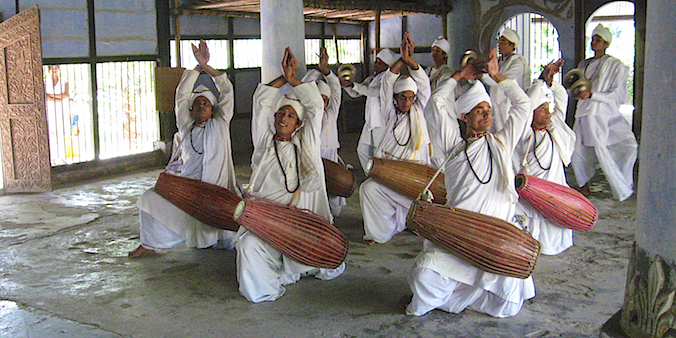
Satras of Majuli island
Kaziranga National Park
